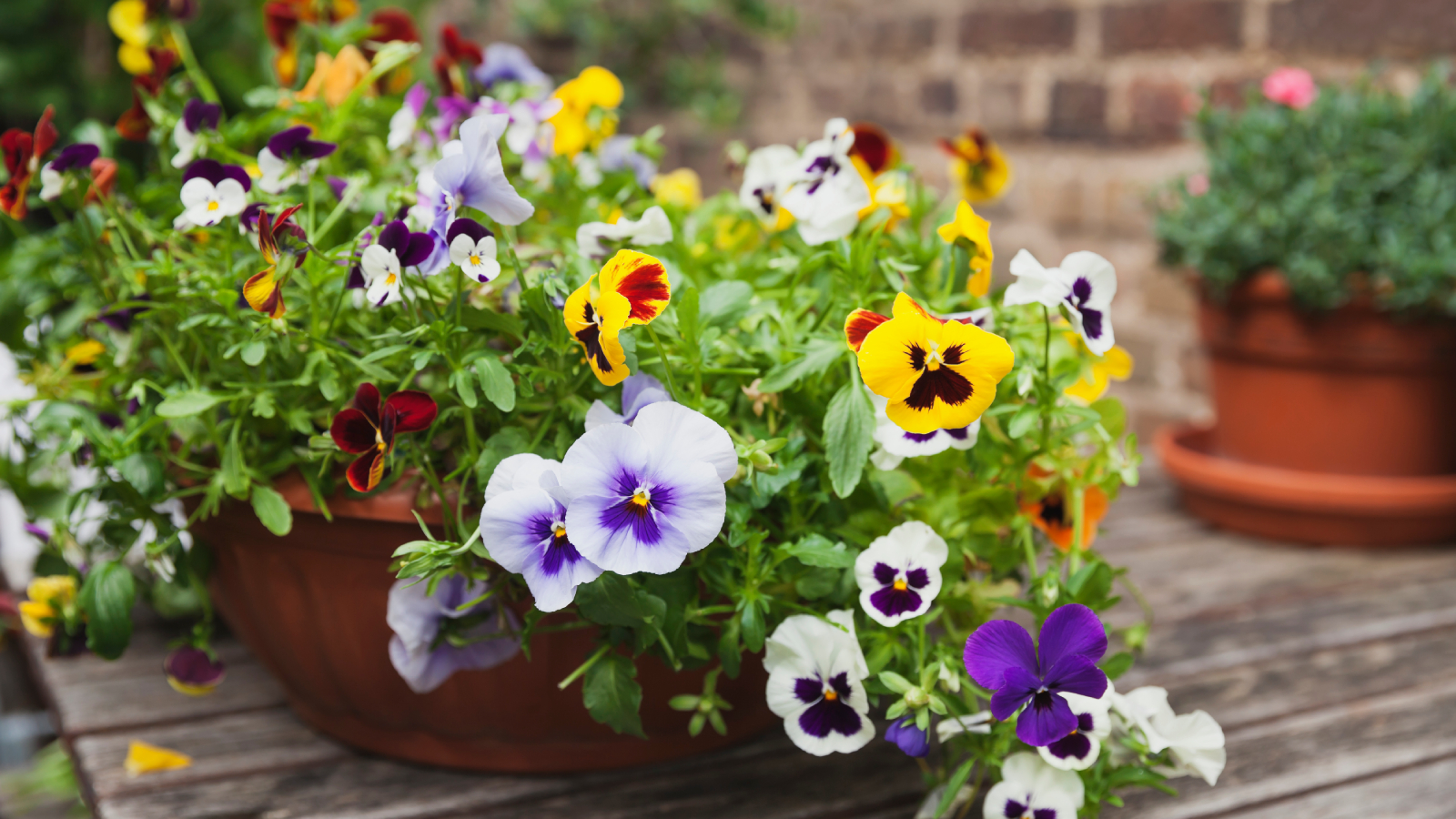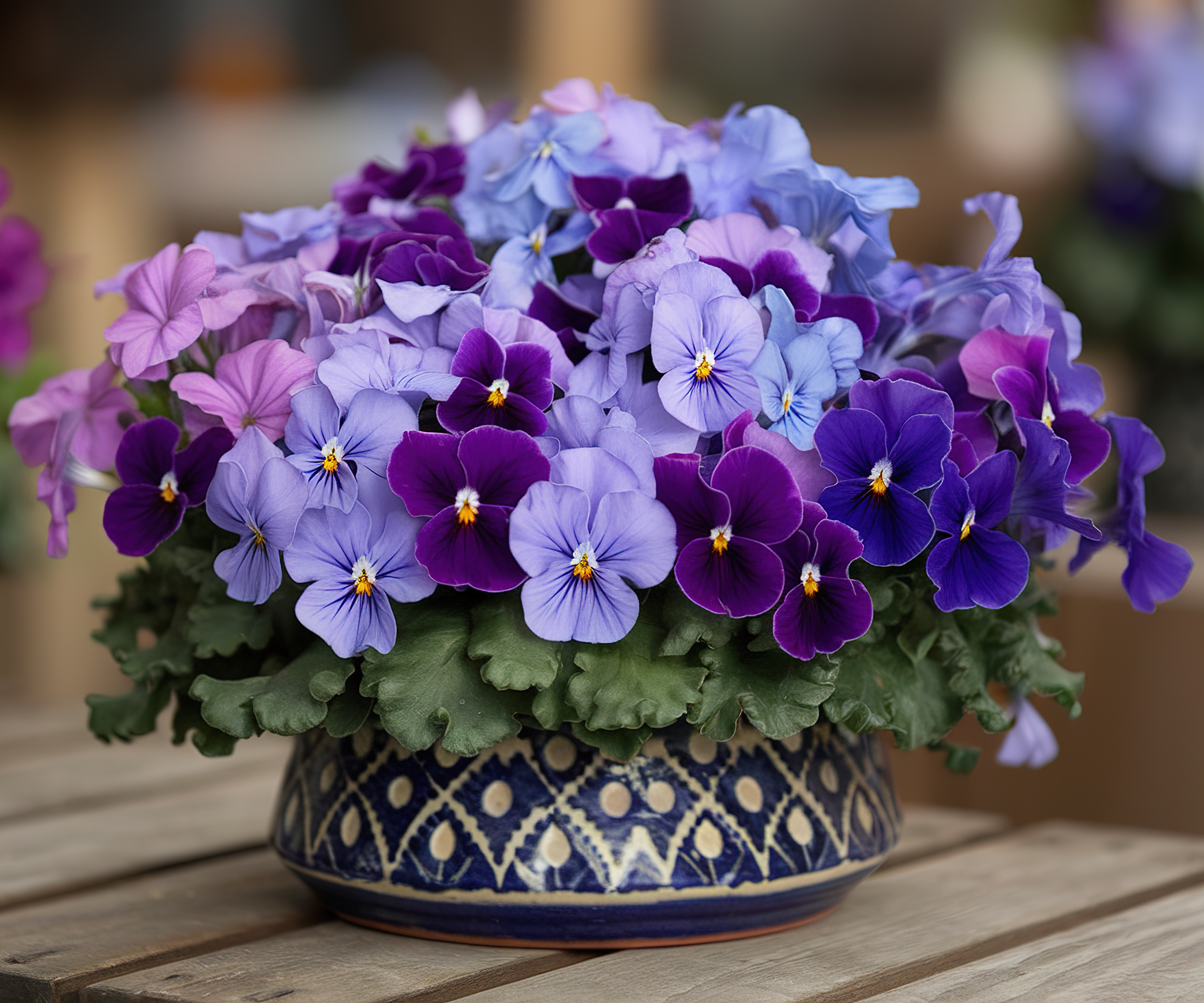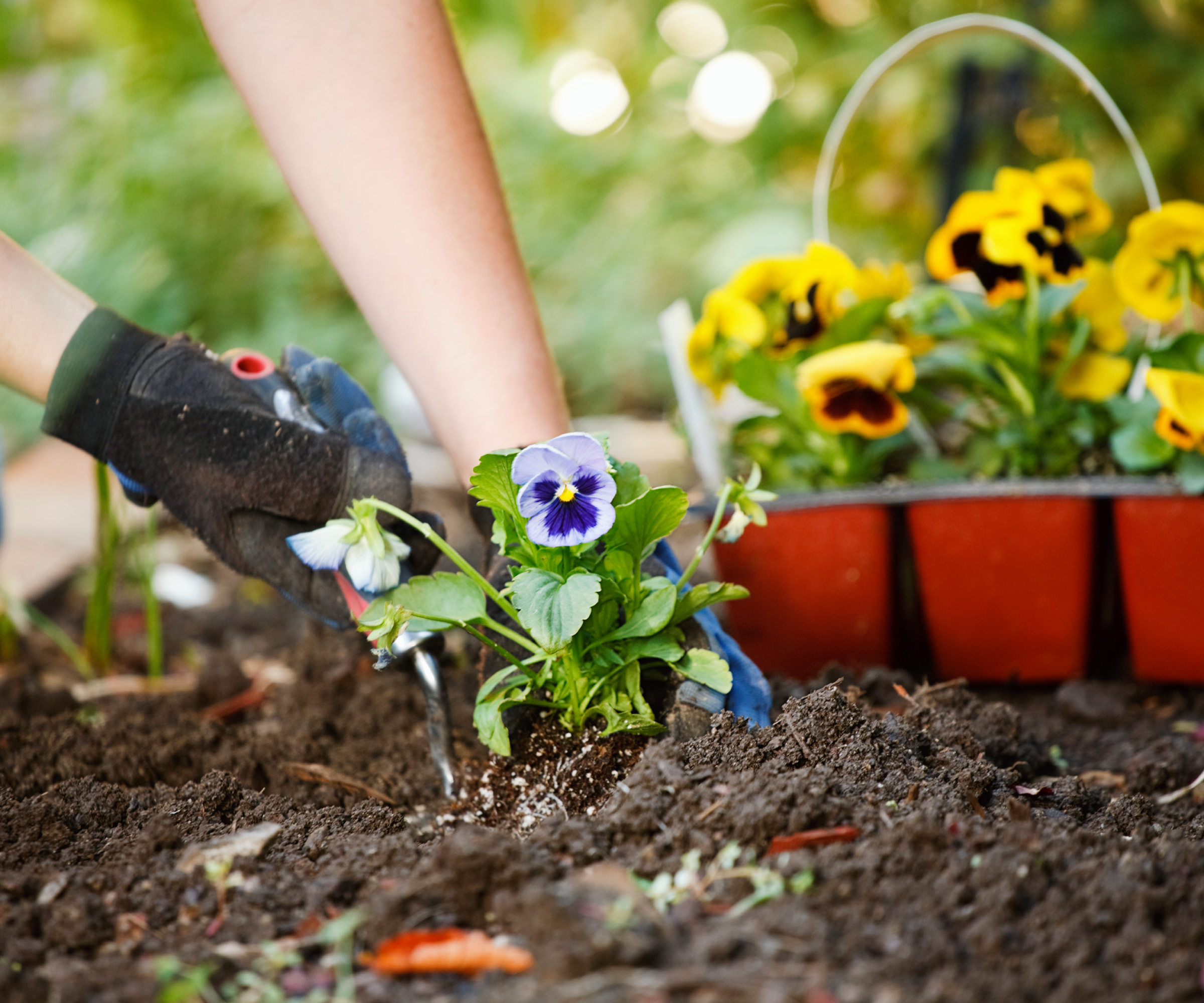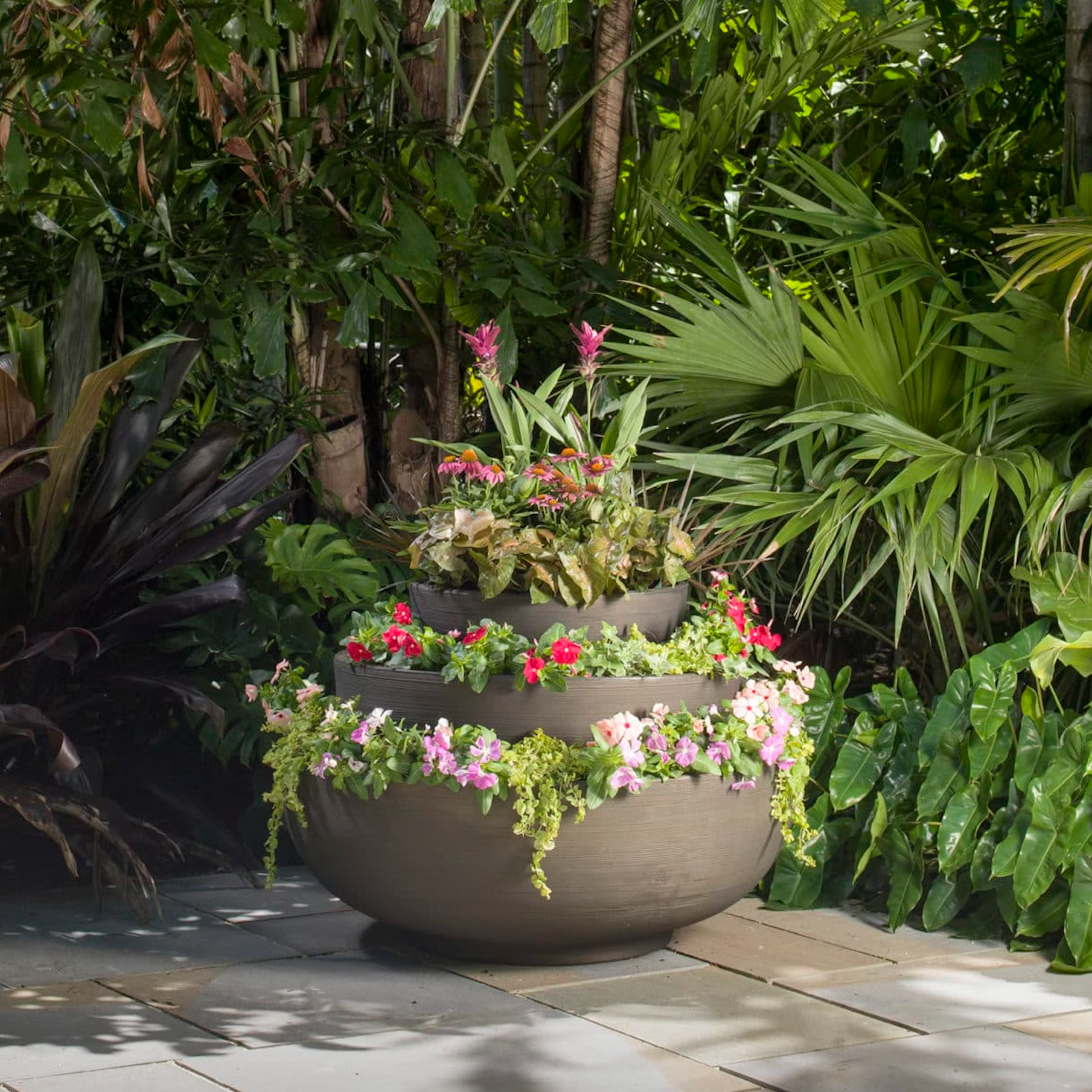Essential Pansy Guide: How To Best Care For Pansies For Bounteous Blooms
Pansies are cheerful flowers and often the first pops of color in the spring. Explore how to care for pansies for the best blooms yet.


Quick facts
Botanical name: Viola x wittrockiana
Height: 6 to 9 inches (15 to 23 cm)
Spread: 9 to 12 inches (23 to 30 cm)
Sun exposure: Full sun to partial shade
Soil requirements: Moist, rich, well-drained
Hardiness zones: USDA zones 6 to 10
When to plant: Spring or fall
Pansies are popular annual flowers for their cheerful, colorful blooms, easy care, and prolific flowering in the cooler temperatures of the shoulder seasons or winter in warm climates. Pansies are often the first annuals seen in gardens in spring, although they are actually short-lived perennials. Find out how to care for pansies in pots or beds to enjoy this bright, attractive flower.
How Do You Care for Pansies?
Learning how to care for pansies is relatively simple. These annual plants are easy to grow and maintain and are hardy in USDA zones 6 to 10.
Lighting Conditions
Pansies prefer full sun, but they appreciate afternoon shade during the hottest months of the year.
Temperature & Humidity
Pansies grow best when temperatures are around 60 degrees Fahrenheit (15.6 Celsius) during the day and 40 degrees (4.4 Celsius) at night. Pansies will not bloom in the heat of the summer and die back in the hot temperatures of most places in the U.S. In warmer climates, pansies grow in the winter.
Watering Needs
Keep the soil around pansies consistently moist but not soggy. Care of pansies in pots requires more frequent watering, especially during hot weather.
Fertilizing
Use a fertilizer at the time of planting pansies to provide plenty of nutrients for blooming. A 5-10-5 fertilizer is a good choice. You can add more fertilizer every few weeks to promote flowering.
Soil & Compost
Pansies grow best in fertile, humus-rich soil that is consistently moist. The soil must drain well, though. If your soil is poor, add compost before planting pansies.
Sign up for the Gardening Know How newsletter today and receive a free copy of our e-book "How to Grow Delicious Tomatoes".
When And How To Plant Pansies

In colder climates, plant pansies in containers or beds in early spring and again in fall. The spring flowers will fade, and the plants will get leggy. Remove them and use summer annuals. In warmer climates, plant pansies in fall to enjoy throughout the winter. They will fade and die back as temperatures get hotter.
Pansies do very well in containers, alone or in mixed pots. They also make good edging flowers for beds or along walkways and as temporary groundcover.
Pansy Pruning & Overwintering
Good care for pansies will result in mostly continuous flowering during the growing season until temperatures rise too high. Encourage ongoing blooms by deadheading spent flowers regularly. You can also pinch back the stems to reduce legginess. Ultimately, the plants will get leggy with high summer temperatures no matter what you do and the pansies won't bloom anymore.
If you live in a colder climate, it might not be worthwhile to bring this short-lived perennial indoors to try to overwinter it. However, if you are within the hardiness zone, your pansies may come back each year. If planting in fall, do so early to ensure the plants have time to mature before it gets cold. Ensure the soil drains very well. Melting snow and early spring rain can prevent pansies from re-emerging.
Pansy Problems, Pests & Diseases
Pansy pest problems and diseases are fairly rare. They are most likely to be nibbled by snails or slugs. Excess water can become an issue, causing root rot or leaf fungal disease. Give plants plenty of space for airflow and ensure the soil drains well to prevent these problems.
How To Propagate Pansies

The best and easiest way to grow pansies is with transplants from a garden center. You can also plant pansy seeds, but it’s not recommended to propagate existing plants. Seeds from existing plants will not grow true and cuttings from pansies do not root well. You can divide older plants, but they will not grow as vigorously.
Frequently Asked Questions
How Do I Care For A Pansy Hanging Basket?
Look for new cultivars of trailing pansies to grow in hanging baskets. Make sure the basket has good drainage and keep it well watered, especially in summer.
What Should I Not Plant With Pansies?
Avoid growing pansies in containers with hot season flowers. The pansies will fade or look leggy while the other plants are blooming.
What Causes Pansies To Get Leggy?
Even good care for pansy flowers will not prevent legginess. They naturally get leggy as temperatures rise. They can also get leggy if grown in too much shade. You can try to revive a leggy summer pansy by trimming it back, providing water and fertilizer, and waiting for cooler temperatures.
More Spring Annual Inspiration
- Did you know that pansies are edible? They can be used in salads, as a garnish, or even candied!
- Explore our picks for the 8 best annual flowers to start in spring. There are some truly unique varieties.
- Shop for the perfect three-tool set in the Gardening Know How Shop. This sturdy and ergonomic set has you covered whether you are digging, weeding, and transplanting.
- Get more gardening tips and landscape inspiration delivered right to your inbox when you sign up for the free Gardening Know How Newsletter.
This article features products available from third-party vendors in the Gardening Know How Shop.

Mary Ellen Ellis has been gardening for over 20 years. With degrees in Chemistry and Biology, Mary Ellen's specialties are flowers, native plants, and herbs.
